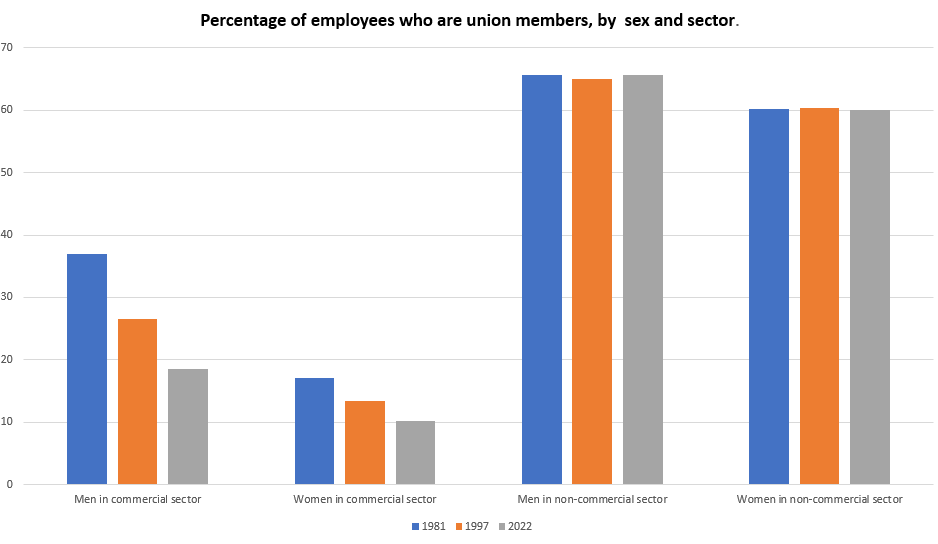10.2 Reasons for Unionization
People may feel their economic needs are not being met by management. There is no one reason why employees feel a need for a union. It can be a personal choice by individuals. There is a perception that some people are coerced into joining unions by other employees, or the unions themselves, or peer pressure. Employees join unions to represented by a large entity to increase wages, benefits, to establish a seniority list, job security and have a mechanism in place for grievances against the company/management.
There is a difference between a desire to join a union to be represented, and opportunity to join a union. When employees are making decisions whether to join a union or not, they generally take into consideration:
- Satisfaction versus dissatisfaction with the employer and/or their job
- Personal attitudes related to unions from media, other employees, past history with unions, parental upbringing (a “for” or “against” unions attitude)
- A belief about what a union can “do” for employees to improve working conditions
- Some employees may not have a desire to join unions, or see it as a great opportunity. Some of these considerations include:
- An employee who has had a former poor experience with unions
- Employees may feel the employer is doing a good job of treating them fairly and equally
- Some employees feel it is just another layer of “management” as an authority
- Some employees may fear repercussions from unionization from management ie. looking to be promoted in the future to management
- Employees do not want to go on strike, if needed, and lose their pay cheques, or pay union dues
Canadian Union Stability
Since the beginning of unionization in Canada, it has seen many changes. As the economy shifts from manufacturing to the service sector over 40 years, and technology has impacted the world of work, so have unions been impacted. Unions impact wages and increases in wages, and retirement pensions. They can affect how companies hire employees, and how many employees (more or less employees). Most recently during the pandemic unions were actively involved in negotiating working from home. Unionized has dropped mostly because of the shift from manufacturing to the service sector.
For both men and women, unionization fell in the commercial sector (industries outside educational services, health care and social assistance, and public administration) but remained stable in the non-commercial sector. For example, the percentage of men who are union members in the commercial sector fell from 31% in 1981 to 19% in 2022. However, the percentage of men who are union members in the non-commercial sector remained stable at about 66%.Note

Not all employee groups experienced a drop in unionization. While there was a decline among men in unionization, there was an increase for women. Some of the reasons for the increase are simply a higher number of women in the workplace than in prior decades. As well, women have shifted into male dominated jobs what pay more money. Many women choose to work part time and are the primary care givers. In recent years, more part time workers are seeking unionization for better working conditions.
Think!
Complete some research to explain why unionization for men has declined in recent years.

